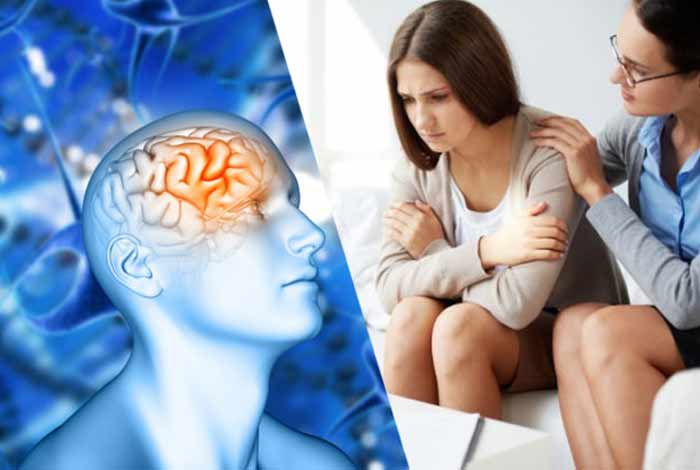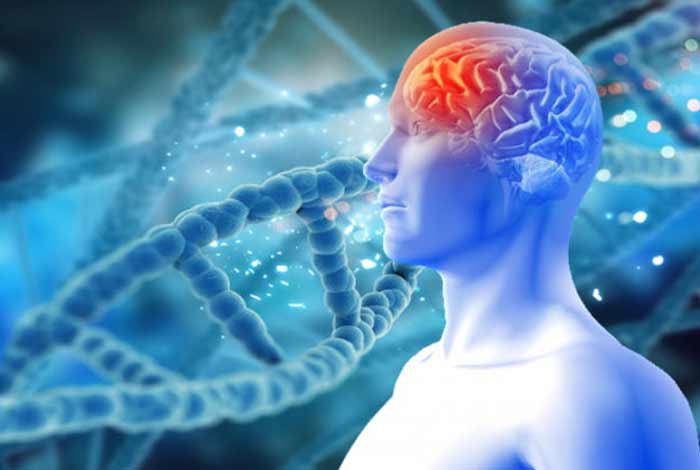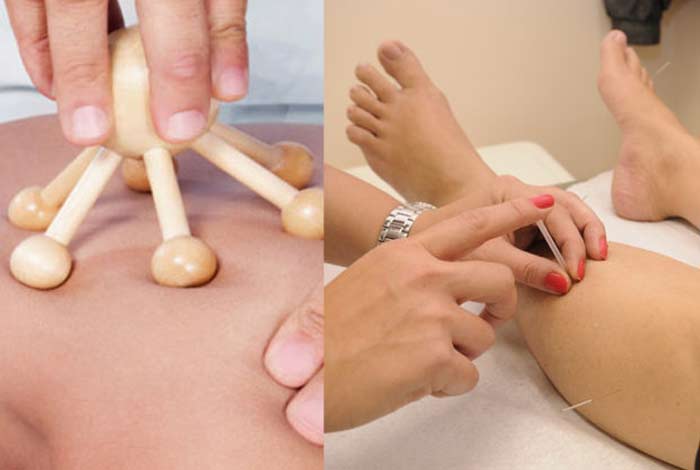
Overview and Facts
Obsessive-compulsive disorder (OCD) is a common, long-lasting and chronic mental health condition in which a person has compulsive behaviors and obsessive thoughts. The person may try to ignore the obsessions, but it leads to distress and anxiety. Eventually, the person feels driven to perform the obsessions to ease the distress and anxiety. Despite efforts to avoid the urges, the troublesome thoughts keep coming back. This puts the person in a cycle of repeated, obsessive thoughts and recurrent behaviors. These compulsions and obsessions interfere with person’s daily activities and lead to significant distress. The OCD makes a person think repeatedly of a situation, for example, fear of being contaminated by germs. This will make a person compulsively wash his/her hands until they are chapped and sore.
Obsessive-compulsive disorder affects both men and women equally. It also affects children. OCD can develop at any age, but it develops mostly during puberty or early adulthood. The average age for developing OCD in the U.S. is 19. About one-third of the affected population observe the initial symptoms in the childhood. There are also cases where it began after age of 35.
If a person is suffering from OCD, they might be embarrassed about developing the condition. However, treatment can provide relief and reduce the anxiety associated with OCD. The conventional treatment includes talk therapy along with anti-depressant medications. The problems related to obsessive-compulsive disorder may include inability to attend school or work, troubled relationships, suicidal thoughts and overall poor quality of life. According to the Anxiety and Depression Association of America, around 2.2 million adults or 1 % of the U.S. population suffer from obsessive-compulsive disorder. Wherein, 50.6% of the cases are considered severe.
Types and Symptoms of Obsessive-Compulsive Disorder
Types of Obsessive-Compulsive Disorder:
OCD can be broadly classified into six types:
1. Checking: This is one of the most common types of OCD. The anxiety can be related to checking door and window locks, taps, lights, wallet, appliances, etc. It can lead to certain obsessions that are not related to personal safety like re-reading documents before sending, vigorously researching information on a topic and constantly checking on loved ones.
2. Contamination: The OCD sufferers that have contamination-related obsession or compulsion, can go great lengths to keep themselves and the environment clean. These behaviors are caused by fear of contracting various diseases through germs. These people wash their hands at small intervals and avoid contact with doorknobs, handles. They also tend to avoid public restrooms, hospitals, restaurants and contact with other people.
3. Mental Contamination: It is a sub-category of the contamination type of OCD. The sufferer is afraid of any psychological damage, so they indulge in washing their bodies for hours after being ridiculed or being mocked at by someone. It is therefore caused by emotional damage and not the fear of contracting disease through germs.
4. Hoarding: This is a widely recognized type of obsessive-compulsive disorder. The person cannot throw away the useless and unnecessary items like old newspapers, used plastic bags, decaying food and even human waste. They generally have littered homes with useless items. Hoarding can be further classified into three categories:
- Sentimental Hoarding: The person who suffers from this type of OCD, does not throw useless items because of the emotional attachment with those items.
- Deprivation Hoarding: It involves keeping things back for future use and to prevent the future possibilities of deprivation. Example includes using only one pair of shoes from 15 pairs the person owns.
- Preventing Harm to others Hoarding: The sufferers of this type of OCD indulge in keeping certain things like broken glasses and human waste, to prevent harm to others by these objects/materials.
5. Ruminations: The sufferers of OCD live with a long chain of thoughts that may be unproductive. They indulge in these thoughts for hours instead of trying to suppress them.
6. Intrusive Thoughts: These thoughts are generally disturbing and involuntary. They can come due to several reasons like sexuality, religion, violence, symmetry, bodily sensations etc.
Symptoms of Obsessive-Compulsive Disorder:
The obsessive-compulsive disorder includes both compulsions and obsessions. It is possible to have either compulsion symptoms or only obsession symptoms. The symptoms associated with this disorder vary in severity over time and from person to person. They can be mild, moderate or severe.
Obsession Symptoms: An obsession is an unpleasant or unwanted thought, urge or image that repeatedly enters the mind and causes feelings of unease, disgust or anxiety. Obsessions include various themes like:
- Fear of dirt or contamination
- Want things to be symmetrical or in order
- Aggressive thoughts of harming oneself and others
- Unwanted thoughts on sexuality, religion, etc.
The obsession symptoms include:
- Doubts that doors are locked or not and whether the stove is off or not
- Fear of being contaminated by touching various objects touched by others
- Urge of arranging the objects in a particular manner or order
- Avoidance of public places like hospitals, public washrooms and interactions like shaking hands with others
- Unnecessary and excessive focus on moral and religious ideas
- Fear of not having things a person might need later
- Paying excessive attention to something
- Images of hurting others and oneself
- Distressed about sexual images reflecting in mind
- Worry about discarding things of no or little value
Compulsion Symptoms: A compulsion is a mental condition which forces a person to do a thing repeatedly to provide herself or himself temporary relief from the unpleasant feelings. These feelings are initiated by obsessive thoughts. Compulsions also generally revolve around themes such as:
- Checking
- Counting
- Cleaning and washing
- Following a strict routine
- Demanding reassurances
- Orderliness
The compulsion symptoms include:
- Washing hands till they become sore and chapped
- Repeatedly checking doors to confirm they are locked
- Checking the stove repeatedly to make sure it is off
- Spending a lot of time in cleaning or washing
- Praying excessively or indulging in religious rituals initiated by fear of religion
- Counting in a particular pattern
- Repeating a word, phrase, or a prayer
- Arranging things in a particular pattern
- Hoarding on certain useless items like old newspapers and empty food cans

Risk Factors of Obsessive-Compulsive Disorder
The factors that might increase the risk of developing OCD are:
- Family History: Having a close family member suffering from obsessive-compulsive disorder can increase the risk of developing OCD in the family members.
- Stressful Life Events: If a person is undergoing a lot of emotional and psychological stress, he/she is at an increased risk of developing OCD. The reaction to this stress might include rituals, intrusive thoughts and emotional distress. These all are characteristics of OCD.
- Other Mental Health Disorders or Neurological Conditions: Having other disorders like depression, attention-deficit hyperactivity disorder (ADHD), anxiety disorder, substance abuse and tic disorder might increase the risk of OCD.
- Age: OCD generally develops in early adulthood or late adolescence. However, it might develop early in childhood or even as late as 35 years of age.
Pregnancy and Postpartum Period: The symptoms related to obsessive-compulsive disorder can be severe during and after pregnancy. It includes having compulsions and disturbing thoughts about baby’s well-being. It is often known as postpartum OCD.

Do I Have Obsessive-Compulsive Disorder?
There is a difference between being a perfectionist who wants everything in a flawless manner and having OCD. If your behaviors and compulsions are time-consuming and affecting your daily activities, you must visit a mental health professional or doctor.
A number of neurological and psychiatric conditions like attention-deficit hyperactivity disorder, anxiety disorder, schizophrenia and depression have symptoms similar to OCD and can also occur along with OCD. Only after a complete diagnosis, a doctor will confirm that a person has obsessive-compulsive disorder.
Causes and Prevention of Obsessive-Compulsive Disorder
Despite much research, the exact causes of OCD are not known. OCD might be initiated by a combination of neurological, genetic, behavioral, environmental and cognitive factors.
- Genetic Causes: Obsessive-compulsive disorder can be regarded as a familial disease. It runs through families and can affect the family members of those who are already suffering from OCD. The specific genes that cause OCD are yet to be identified.
- Autoimmune Causes: The rapid onset of OCD in children can be due to Group A streptococcal infections. These infections cause dysfunction and inflammation in the basal ganglia region of the brain. These cases are together referred as pediatric autoimmune neuropsychiatric disorders associated with streptococcal infections (PANDAS). However, recently, the flu virus H1N1 and the bacteria causing Lyme syndrome are also associated with rapid onset of OCD in children.
- Behavioral Causes: The people suffering from OCD often associate certain things/situations with fear. This induced fear makes them avoid these things and situations. They also tend to perform certain rituals to ward off the fear.
- Cognitive Causes: Most people have intrusive and unwanted thoughts, but the people with OCD take these thoughts very seriously and respond as if it they are a threat. The sufferers will continue such avoidance behaviors and rituals if they take these thoughts to be true.
- Neurological Causes: Certain brain imaging techniques have revealed a significant difference between a normal brain and brain of an OCD patient. It is still not known that how these differences lead to obsessive-compulsive disorder. Imbalances in glutamate and serotonin might trigger OCD.
- Environmental Causes: Certain infections and injuries lead to the early onset of OCD in children. A study has revealed that 30% children and adolescents who experienced traumatic brain injury (TBI) developed OCD within 12 months of the injury. Stressful and traumatic events also contribute to OCD.
- Personality Factor: A person who is very methodical, neat and meticulous might develop obsessive-compulsive disorder. People who have a strong sense of responsibility and are generally very anxious have higher chances of developing OCD in future.
Obsessive-compulsive disorder cannot be prevented from starting but the relapse of the symptoms can be prevented. Taking the prescribed medications on time and sticking to the therapy can prevent relapse of OCD symptoms.

Diagnosis and Tests for Obsessive-Compulsive Disorder
The American Psychiatric Association has provided diagnostic criteria for OCD in the Diagnostic and Statistical Manual of Mental Disorders (DSM-5). It includes:
- The presence of obsessions, compulsions or both.
- The compulsions and obsessions are time-consuming or cause significant distress or impairment in occupational, social or several other important areas of functioning.
- The obsessions and compulsions are not due to any psychological effects of drug or substance abuse, or medication for another condition.
- The disturbance is not linked with any other mental disorder.
If the above-mentioned criteria are met, a diagnosis of OCD might be done. The diagnosis includes the following:
- Physical Examination: This examination is done to rule out any other condition or complication that might be causing the symptoms.
- Lab Tests: This might include the complete blood count (CBC), checking the thyroid function or screening for drugs/alcohol.
- Psychological Evaluation: This involves discussing the fears, thoughts, symptoms and other behavior patterns of a person. The doctor might also talk to the family and friends of the person affected with OCD.

Treatment and Care of Obsessive-Compulsive Disorder
Treatment for OCD depends on how much the condition is affecting person’s ability to function.
The first-line treatment for OCD includes:
- Cognitive behavioral therapy (CBT)
- Selective serotonin reuptake inhibitors (SSRIs)
1. Cognitive-Behavioral Therapy: It is an effective talk therapy for treating OCD. It involves changing the way a patient feels, thinks, and behaves. The treatment using CBT involves exposure and response prevention (ERP). The patient is repeatedly exposed to the feared things and situations. Over the time, the person does not feel anxiety by these obsessional cues. Response prevention refers to preventing rituals in OCD patients. These people do rituals to reduce anxiety. With the help of CBT, the patients do not perform these rituals anymore. ERP requires practice and efforts, but it can help the patient lead a quality life. This therapy can be done in family, group or in individual sessions.
2. Selective Serotonin Reuptake Inhibitors (SSRIs): These can help in managing the OCD symptoms and should be taken if prescribed by the doctor. Antidepressants are used first to treat the obsessive-compulsive disorder. The following antidepressants are approved by the U.S. Food and Drug Administration (FDA):
- Fluvoxamine
- Paroxetine (Paxil, others)
- Clomipramine (Anafranil)
- Fluoxetine (Prozac)
- Sertraline (Zoloft)
SSRIs are used in larger doses than used in depression and for almost three months. These medications should be continued as long as prescribed by the doctor. Several antipsychotic medications are also given along with these medications.
A combination of CBT and the SSRIs can help in treating the obsessive-compulsive disorder.
Deep brain stimulation (DBS) is advised for patients who do not respond to all other available treatment options. It is effective in treating the symptoms related to the obsessive-compulsive disorder. However, there are many side-effects of this procedure.
Care during obsessive-compulsive disorder includes:
- Avoid criticizing the patient’s compulsions and behaviors
- Be kind, patient and empathetic towards people suffering from OCD
- Communicate directly, positively and effectively with the patient
- Do not help in the sufferer’s ritual(s)
- Find humor in the person’s OCD symptoms, it might help them in detaching from the compulsive behaviors
- Don’t let OCD destroy usual family happiness and activities
- Don’t scold someone with OCD and do not tell them to stop doing rituals
- Learn more about the obsessive-compulsive disorder and its treatment
- Support the person with OCD in their medications and treatment
- Help the patient in learning healthy coping techniques

OTC and Self-Management Methods for Obsessive-Compulsive Disorder
There is no OTC as such for obsessive-compulsive disorder. A person with OCD can take anti-depressants as prescribed by the doctor.
Magnesium, zinc, iron and Vitamin B-12 supplements can be additionally used by anyone suffering from Obsessive-compulsive disorder.
Self-management methods for obsessive-compulsive disorder include:
- Take your medications on time and as prescribed by the doctor.
- Pay attention to the OCD triggers, know what to do in case symptoms return.
- Practice coping techniques taught in the cognitive behavioral therapy.
- Learn about your condition as much as possible, this might motivate you to continue with the treatment.
- Join an OCD support group to get inspiration and motivation.
- It is also recommended to start your day with oats. It helps in preventing anxiety and stress in people with obsessive-compulsive disorder.
- Indulge in recreational activities/hobbies to divert your mind away from obsessions and compulsions.
- Continue with your regular daily activities like going to school, workplace etc.
- Learn relaxation techniques such as visualization, meditation, massage, muscle relaxation, etc. that help in stress management.
- Consume foods that have high nutritional values and are rich in essential fatty acids, magnesium, zinc and vitamins. Increase intake of green leafy vegetables, fish, nuts, lentils, seeds, beans, soy products, eggs and low-fat dairy. These help in reducing stress and anxiety related to the OCD.
- Never skip your meals as it can lead to stress and anxiety.
- Opt for decaffeinated drinks to soothe your senses.
- Limit your alcohol intake.
- Quit smoking and avoid anything that contains nicotine.
- Exercise regularly for about 30 minutes daily. It boosts both mental and physical health.
- Sleep at least seven hours a day. It helps in reducing stress and preventing symptoms associated with OCD.

Natural Ways to Cure Obsessive-Compulsive Disorder
- Aromatherapy with Essential Oils: Aromatherapy is very effective in calming the person suffering from OCD. A person with obsessive-compulsive disorder usually feels agitated and tired. Add around eight to ten drops of essential oils such as rosemary and lavender oil to water and soak in it for about half an hour. This will make the patient feel refreshed and relaxed.
- St. John’s Wort: It is a natural cure for the symptoms of obsessive-compulsive disorder. A person can make herbal tea using St. John’s wort and consume it daily to treat depression and anxiety associated with OCD. It can also be consumed two or three times a day as it has no known side-effects.
- Acupuncture: It is an ancient Chinese technique in which fine needles are inserted in the skin at points known as meridians. They release the blocked energy. This provides a calming effect on the person suffering from OCD. Different organs and parts are targeted to get relief from depression and anxiety.
- Acupressure: Acupressure techniques release the flow of energy and relieve muscle tension. It involves mild to firm finger pressure at the areas called meridians. This therapy helps in relieving stress and anxiety associated with OCD. It also provides a soothing effect on the body.
- Relaxation Techniques and Meditation: Relaxation techniques are must for people suffering from OCD; it helps in controlling stress and anxiety related to the disorder. Practice deep breathing for at least ten minutes a day. Mediation and yoga can also help in reducing anxiety and calming the mind. Focused training and persistent efforts can greatly help the person suffering from OCD.
- Massage: There are several benefits of massage such as relaxation and detoxification of the body. Getting massage regularly can help in reducing the urges to perform the compulsions. It also lowers the stress level and has a calming effect on the body.

Health Tip by Expert
It is advised to stick to the treatment plan religiously. Practicing relaxation and breathing techniques help in reducing the urges associated with OCD. Indulging in yoga and meditation helps in relieving stress and anxiety. A person with OCD can lead a normal life through persistent efforts and determination.





